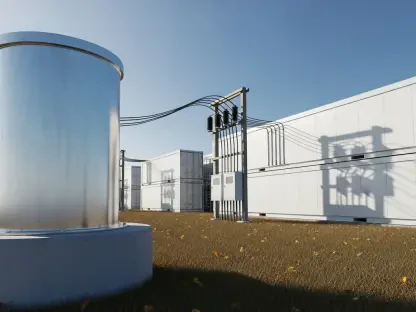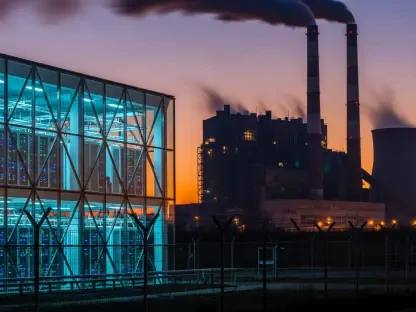In the realm of sustainable energy, Christopher Hailstone shines as a beacon of insight and expertise. With a notable background in energy management, renewable energy, and grid reliability, his perspective on the groundbreaking strides made in sustainable aviation fuel (SAF) is invaluable. Today, we delve into the significant milestone achieved by Zhejiang Jiaao Enprotech, the first Chinese private enterprise to export SAF, marking a pivotal moment in the global green energy landscape.
Can you tell us more about Zhejiang Jiaao Enprotech’s historic achievement in exporting sustainable aviation fuel (SAF)?
Zhejiang Jiaao Enprotech’s export of SAF represents a monumental achievement for China’s green energy sector. It underscores the country’s capability to produce and supply this innovative fuel on a global scale. This achievement places them at the forefront of sustainable fuels, contributing significantly to reducing carbon emissions in aviation—a crucial sector for addressing climate change.
What were the key steps that led to Zhejiang Jiaao becoming the first Chinese private enterprise to export SAF?
The journey began with their strategic focus on producing SAF from used cooking oil, a sustainable raw material. Gaining inclusion in the government’s “exporter whitelist” was a pivotal step, which was necessary to secure the official export license. This meticulous groundwork laid by Zhejiang Jiaao allowed them to meet international standards and pave the way for their historic export.
Could you elaborate on the significance of being added to the government-approved “exporter whitelist”?
Being on the “exporter whitelist” is crucial as it signifies the recognition of a company’s compliance with domestic and international regulations. For Zhejiang Jiaao, it solidified their standing as a trusted player capable of taking their production to global markets, thereby enhancing their credibility and opening new commercial opportunities.
What does gaining an export license mean for Zhejiang Jiaao and its future SAF exports?
Acquiring an export license allows Zhejiang Jiaao to fully activate their annual SAF production capacity, setting a foundation for robust growth in international markets. This license not only boosts their export potential but also helps them scale operations while maintaining a competitive edge in the rapidly expanding SAF industry.
How does Zhejiang Jiaao plan to maximize its full annual capacity of 370,000 tonnes of SAF in 2024 following the export approval?
Maximizing capacity involves strategic planning around production efficiency, logistics, and market expansion. Zhejiang Jiaao is likely focusing on optimizing their production processes and strengthening their supply chain to ensure uninterrupted deliveries. They also aim to explore and secure new export markets to reach their full annual production capacity in the coming year.
Could you provide some details about the destination of the recent SAF export?
While the specific destination of the recent SAF export remains undisclosed, it is indicative of Zhejiang Jiaao’s strategy to target markets that are proactive in adopting green technologies. Their choice of destination likely points to countries or regions with stringent sustainability standards and a strong demand for renewable aviation fuel.
How do you anticipate other Chinese biofuel producers will follow in Zhejiang Jiaao’s footsteps for SAF export licenses?
Chinese biofuel producers are likely to be inspired by Zhejiang Jiaao’s success and might expedite efforts to acquire their own export licenses. This requires meeting regulatory requirements and investing in production capabilities to ensure that they, too, can access international markets. A collective forward movement can reinforce China’s position as a key player in the global SAF market.
How does the current lack of a specific harmonized system (HS) code for SAF exports affect Zhejiang Jiaao and other producers?
The absence of a specific HS code poses challenges in categorizing SAF exports, potentially complicating customs clearance and tariffs. Producers like Zhejiang Jiaao must navigate these complexities within existing frameworks, which might require persistent advocacy for more precise classification to streamline future exports.
What implications might the use of the existing HS code for “jet fuel (excluding biodiesel)” have on future SAF exports from China?
Using the current HS code for “jet fuel” can create ambiguity, as it doesn’t clearly distinguish SAF from traditional fuels. This might impact how SAF is taxed or regulated internationally. It highlights the need for a bespoke code to facilitate transparent trade practices and encourage broader adoption of SAF.
Given that a significant portion of China’s UCO exports are sent to the EU, how does Zhejiang Jiaao plan to balance international demand with domestic needs?
Balancing export and domestic demand involves strategic resource allocation and market prioritization. Zhejiang Jiaao might focus on scaling up production, enhancing UCO supply channels, and developing partnerships to ensure that both international demands and domestic needs are efficiently met.
What impact do new EU rules requiring flights to use at least 2% SAF have on Chinese SAF producers?
These EU mandates significantly boost the potential demand for SAF, offering Chinese producers a lucrative opportunity to increase market share. Chinese companies may need to boost production capacity and quality standards to align with European requirements, thus expanding their footprint in the global market.
How is the domestic demand for SAF changing within China, and what factors are driving this growth?
Domestic demand is rising as China pushes for more sustainable practices across its industries. Factors such as increasing environmental awareness, government policies, and trials demonstrating SAF’s efficacy all contribute to this growth, positioning SAF as a viable option for reducing carbon footprints in aviation domestically.
Can you share insights on the trials of SAF in commercial flights within China and their outcomes?
The trials of SAF in China have successfully demonstrated its viability, ensuring aircraft performance and safety levels while reducing emissions. These trials are an essential step in gaining confidence among airlines and stakeholders, fostering further adoption of SAF for commercial flights throughout the country.
What are Zhejiang Jiaao’s plans for expanding SAF production capacity beyond the current 350,000 tonnes?
To expand capacity, Zhejiang Jiaao is likely investing in new technology, infrastructure, and partnerships. Scaling up production not only caters to growing demand but also positions them as a leader in sustainable aviation fuel, enabling them to serve both domestic and international markets more effectively.
How has the cancellation of the export tax rebate for UCO affected the company’s supply chain and production strategies?
The tax rebate cancellation emphasizes the need for efficient supply chain management and cost optimization. Zhejiang Jiaao may adapt by focusing on cost-effective production methods, securing local supply sources, and enhancing partnerships to mitigate the financial impact while maintaining production outputs.
What is your forecast for the future of sustainable aviation fuel production in China?
China’s SAF industry is poised for exponential growth driven by increasing environmental policies and global demand for cleaner energy. I foresee significant investments in technology and production capacity, enabling China to not just meet domestic demand but become a substantial player in the international SAF market.









